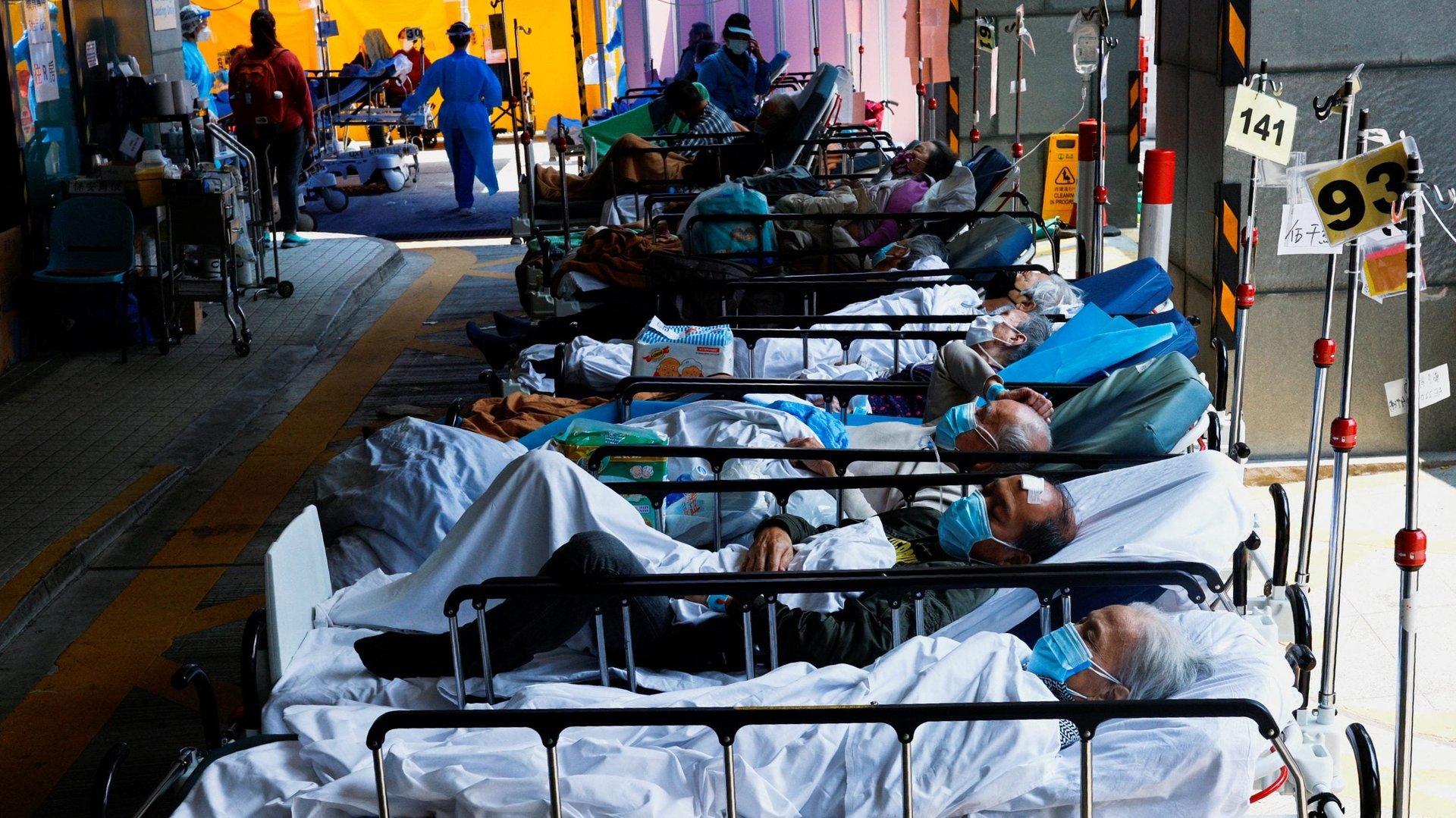Hong Kong’s covid death rate has surpassed the US’s worst day
Hong Kong reported a record 172 Covid-related deaths yesterday (March 1)—a single-day fatality rate that surpasses the most deadly days of the pandemic in the US when adjusted for population size.


Hong Kong reported a record 172 Covid-related deaths yesterday (March 1)—a single-day fatality rate that surpasses the most deadly days of the pandemic in the US when adjusted for population size.
Hong Kong is a city of 7.4 million people, which puts yesterday’s death rate at 2.32 per 100,000 people. If the city had the same population as the US (332 million), it would have recorded the equivalent of over 7,700 deaths yesterday. That’s far higher than the 4,442 and 4,219 recorded respectively on Jan. 20, 2021 and Feb. 4, 2022, so far the two deadliest pandemic days for the US, according to data from Johns Hopkins University.
Meanwhile Hong Kong reported more than 55,000 new covid cases today, more than the roughly 42,000 cases the US reported on March 1.
Apart from exceeding the worst single-day death rate of the US, Hong Kong now also finds itself with the highest death rate in the world, according to data from the New York Times. As of March 2, the city’s seven-day average is 1.25 deaths per 100,000 people. That’s well ahead of the next country, Georgia, at 1.02, and more than double the US’s 0.58.
A key driver of the soaring death rates in Hong Kong appears to be the severely under-vaccinated status among its elderly. According to data released by the government this past weekend, 91% of the city’s deaths (pdf) since the latest Omicron-driven wave took hold were of people who had not been fully vaccinated.
That Hong Kong’s covid situation—previously held up as a global success story—has come to this is arguably an indictment of the city government’s shortsighted planning and misdirected priorities.
For much of 2021, Hong Kong had almost no local Covid cases, in large part because the city kept the virus out with some of the world’s most stringent travel and quarantine restrictions. The government bet fully on a policy of “zero covid,” wagering that travel restrictions and contact tracing could quickly snuff out any local transmission chain. That worked on earlier variants—but the far more transmissible omicron foiled a strategy primarily premised on policing the city’s borders.
Even before the emergence of omicron, experts had questioned the long-term sustainability of “zero covid” and urged authorities to begin mapping out an exit plan. Yet officials failed to use the lengthy period of low covid cases to get its most vulnerable fully vaccinated—a necessary condition for any transition towards “living with the virus.”
Meanwhile, the government also made no contingency plans for how to quickly revert back to zero-covid if cases began spreading. For example, it would have needed a stockpile of rapid antigen tests that it could quickly mass distribute, quarantine facilities and field hospitals on a large scale, and the ability to quickly ramp up mass testing. None of those preparations were made.
And so “zero covid” worked—until, inevitably, it did not.